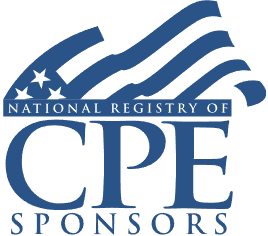Advanced Income Tax Apportionment Issues Confronting Multistate Companies
Navigating States' Application of Market-Based Sourcing, Utilizing Alternative Apportionment, and Weighting Factors

Course Details
- smart_display Format
On-Demand
- signal_cellular_alt Difficulty Level
Intermediate
- work Practice Area
Corporate Tax
- event Date
Thursday, October 5, 2023
- schedule Time
1:00 p.m. ET./10:00 a.m. PT
- timer Program Length
110 minutes
-
BARBRI is a NASBA CPE sponsor and this 110-minute webinar is accredited for 2.0 CPE credits.
This course will prepare tax executives and managers to handle the most complex and challenging apportionment issues with broad application to companies operating in various industries and a large number of states. The panel will go beyond the basics of apportionment for corporate tax professionals who have grasped the fundamentals but need an advanced briefing on resolving complex challenges.
Faculty

Ms. Bennetsen is a Tax Director in the State and Local Tax Group, with nearly 20 years of both public and private accounting experience. She focuses on all aspects of state and local tax, including financial reporting and general consulting. Ms. Bennetsen has significant experience serving clients in the manufacturing, pharmaceutical, technology, and service industries.

Mr Dobson provides useful assistance when addressing state and local tax matters, including advice regarding direct, indirect, and M&A tax issues. He has specific expertise in assisting clients with Virginia Business, Professional, Occupational, and License (BPOL) tax issues and opportunities.

Mr. Feehan is a State and Local Tax partner in the Firm’s Boston Office. He works with a diverse group of Marcum clients to proactively identify tax planning opportunities and manage risks. Mr. Feehan advises on state income taxes impacting corporations, pass-through entities and individuals, as well as, indirect taxes such as sales and use, gross receipts, property, employment and transfer taxes.
Description
Apportioning income and tax liabilities for companies operating in multiple states presents significant challenges for tax professionals beyond the basics of apportionment. Over recent years, many states and the MTC now apportion the sale of non-tangible personal property on a market-state rather than on a cost-of-performance basis.
Many states have moved from the traditional three-factor apportionment approach to single-factor apportionment. The use of alternative apportionment has increased in recent years. The experiences and guidance of veteran state tax advisers on advanced apportionment issues are invaluable for corporate tax professionals as they approach their companies' compliance and planning.
Listen as our panel addresses the complexities of market-based sourcing, provides a briefing on critical new developments, clarifies the confusing approaches taken by states, outlines essential areas, and offers insights on advanced apportionment challenges.
Outline
- Advanced income tax apportionment issues: introduction
- Sourcing of receipts from service and intangibles
- Alternative apportionment
- Throwback and throwout rules
- Joyce and Finnigan rules
- Pass-through entity issues
Benefits
The panel will address these and other vital issues:
- Considerations in apportioning income from the sale of non-tangible personal property in cost-of-performance and market-based states
- Issues with weighting factors in apportionment formulas
- The use of alternative apportionment
- Advanced apportionment issues for corporations
NASBA Details
Learning Objectives
After completing this course, you will be able to:
- Discern reporting income in states that have deviated from traditional three-factor apportionment to a single-factor formula
- Determine how to handle advanced apportionment issues for corporations
- Recognize when alternative apportionment methods should be used
- Ascertain appropriate income apportionment approaches for highly complex matters
- Field of Study: Taxes
- Level of Knowledge: Intermediate
- Advance Preparation: None
- Teaching Method: Seminar/Lecture
- Delivery Method: Group-Internet (via computer)
- Attendance Monitoring Method: Attendance is monitored electronically via a participant's PIN and through a series of attendance verification prompts displayed throughout the program
- Prerequisite: Three years+ business or public firm experience at mid-level within the organization, preparing complex tax forms and schedules; supervisory authority over other preparers/accountants. Knowledge and understanding of tax apportionment approaches involving multi-state companies; familiarity with factor weighting and income sourcing methods.

Strafford Publications, Inc. is registered with the National Association of State Boards of Accountancy (NASBA) as a sponsor of continuing professional education on the National Registry of CPE Sponsors. State boards of Accountancy have final authority on the acceptance of individual courses for CPE Credits. Complaints regarding registered sponsons may be submitted to NASBA through its website: www.nasbaregistry.org.
Related Courses

State Individual Income Taxes on Nonresidents: Managing Inconsistent State Guidelines
Tuesday, April 22, 2025
1:00 p.m. ET./10:00 a.m. PT

State Taxation of Partnership Interest Sales: Recent Legislation, State Apportionment and Allocation Methods, Business vs. Nonbusiness Income
Wednesday, April 16, 2025
1:00 p.m. ET./10:00 a.m. PT

Expanding Economic Nexus Beyond State Sales Tax: Managing Unique Local and Indirect Taxes
Friday, April 11, 2025
1:00 PM E.T.